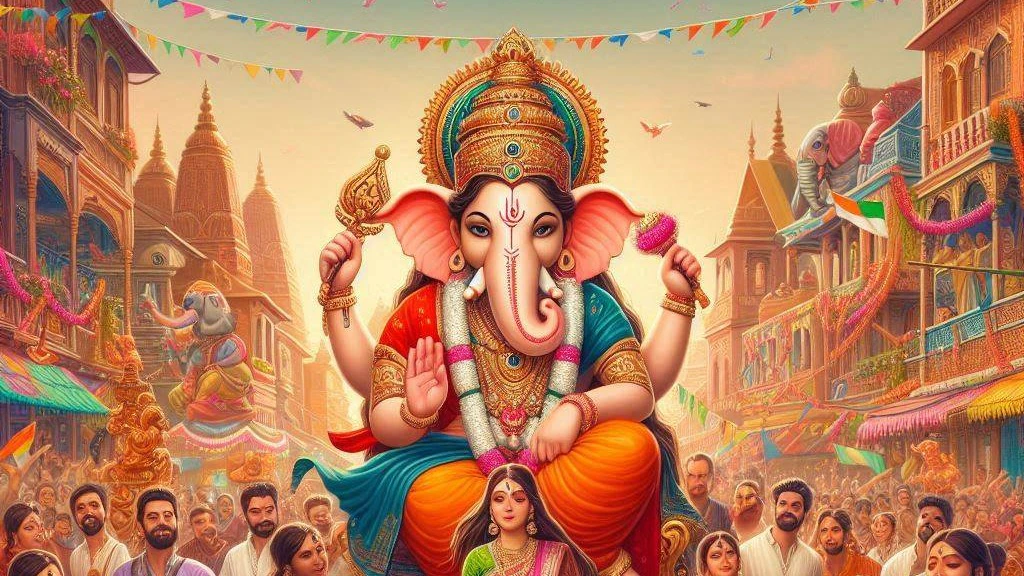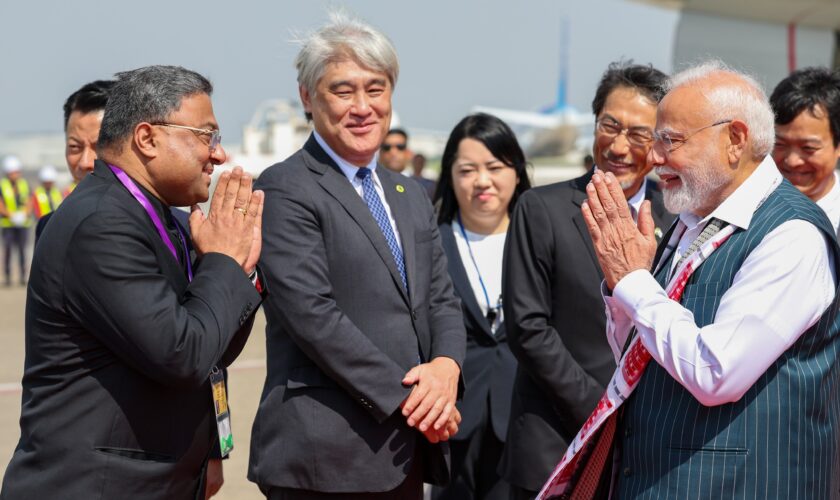Mumbai: Ganeshotsava, a festival celebrating the birth of Lord Ganesha, has blossomed from a regional Indian tradition into a vibrant global phenomenon. What began as an intimate household ritual in Maharashtra has transcended borders, uniting millions in a shared tapestry of faith, culture, and community. From bustling public pandals in Mumbai to serene temple pujas in the Caribbean, Ganeshotsava is celebrated with a unique blend of devotion and artistry that reflects its diverse worldwide footprint.
The Heartbeat of the Festival
At its core, Ganeshotsava is a 10-day spiritual journey. It begins on Ganesh Chaturthi with Prana Pratishtha, the ritual of invoking the deity’s presence into the idol. This is followed by daily aartis—soulful prayer rituals accompanied by cymbals and drums—and offerings of modaks, Lord Ganesha’s favorite sweet. The festival culminates in the emotionally charged Ganesh Visarjan on Anant Chaturdashi, where devotees immerse the idols in water, symbolizing the deity’s return to his celestial abode.
This blend of public fervor and private devotion was masterfully harnessed by Lokmanya Bal Gangadhar Tilak in 1893. He transformed Ganeshotsava into a community festival to unite people against British colonial rule, effectively turning a religious event into a tool for social and political awakening. This legacy of unity continues today, with the festival serving as a bridge between castes, classes, and communities.

India: The Epicenter of Extravaganza
Nowhere is the festival’s grandeur more evident than in India, its spiritual home.
Maharashtra: The state, particularly Mumbai and Pune, is synonymous with the festival’s extravagance. Mumbai’s iconic Lalbaugcha Raja pandal draws millions of devotees, including Bollywood celebrities and politicians. This year, the open kitchen at the pandal served thousands daily, embodying the spirit of annadaan (food donation). Pune, the birthplace of the public celebrations, continues its legacy with historic mandals that often use their platforms to promote social messages. Nagpur’s pandals also blended festivity with a sense of social responsibility, promoting community welfare alongside the celebrations.
Beyond Maharashtra: The festival’s spirit thrives across the country. In Tamil Nadu, it is celebrated as Vinayagar Chaturthi, a time for creating eco-friendly clay idols and offering prayers in temples. In Bengaluru, the celebration reflects a modern, urban enthusiasm, while in Uttar Pradesh and Madhya Pradesh, Ganeshotsava is embraced with increasing fervor, with local pandals gaining prominence. The diversity in regional celebrations is a testament to the festival’s ability to adapt while staying true to its core.
Ganeshotsava Goes Global
The festival’s global footprint is a testament to the Hindu diaspora’s devotion and cultural pride. From North America to Southeast Asia, communities are recreating the vibrant atmosphere of India.
United States and Canada: In cities like New York, Toronto, and Vancouver, Hindu temples and community centers organize elaborate pujas and cultural programs. These events serve as a vital link to their cultural roots for many. In a nod to sustainability, many communities now hold workshops on making eco-friendly idols, with some even using seed-infused murtis that can be planted after the festival.

Southeast Asia: Ganeshotsava is a vibrant affair in Singapore and Malaysia. Celebrations in temples often feature traditional kolams (rangoli) and cultural performances, while in Sri Lanka, the festival is a solemn and devotional event.
Caribbean and Oceania: The festival’s journey to the Caribbean reflects the history of indentured laborers. In Trinidad and Tobago, Guyana, and Suriname, Ganeshotsava is a fusion of Indian and Caribbean cultures, with devotional songs often incorporating chutney music. In Fiji and Mauritius, the festival is a public holiday, celebrated with grand pandals and community gatherings.
A Modern Festival with Ancient Roots
In a world increasingly concerned with climate change, Ganeshotsava is undergoing a significant transformation. The use of Plaster of Paris (PoP) idols, which pollute water bodies, is being replaced by eco-friendly alternatives. Artisans now use natural clay, papier-mâché, and even seed-infused materials. This shift is not just an environmental choice but a conscious effort to align tradition with modern values.
Community initiatives in India and abroad are actively promoting this change. In Mumbai, pandals are now using natural dyes and biodegradable decorations, and many cities are creating artificial immersion ponds to prevent water pollution. This evolution shows that Ganeshotsava is not a static tradition but a living, breathing celebration that adapts to the needs of the time, ensuring its legacy of wisdom and prosperity extends to the planet itself.
The Cultural Resonance
Beyond its religious significance, Ganeshotsava’s impact on culture is profound. It has been immortalized in Bollywood films like Agneepath and Don, with iconic songs and dance sequences. The festival’s ability to bring people together, transcending social divides, remains its most enduring legacy. Volunteers from all walks of life, from corporate CEOs to daily wage laborers, participate in shramadaan (voluntary service) at pandals, reinforcing the festival’s spirit of unity and selfless service.
In the end, Ganeshotsava is more than a festival; it’s a celebration of human spirit, creativity, and community. From the grand processions of Pune to the intimate home pujas in London, the festival’s essence—hope, wisdom, and renewal—resonates worldwide. As millions chant, “Ganpati Bappa Morya, Purchya Varshi Laukariya” (Goodbye Lord, come back next year), they are not just bidding farewell but reaffirming their faith in a tradition that continues to bring people together, one joyous celebration at a time.





